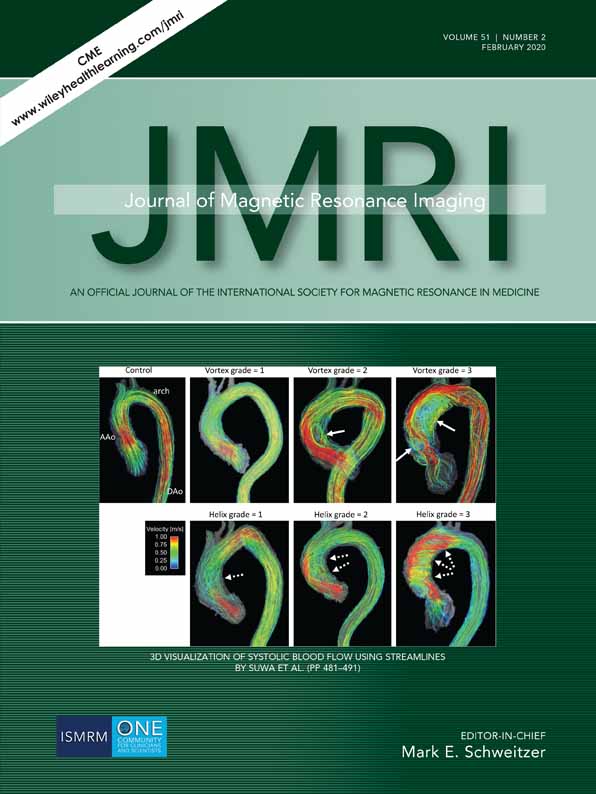Increasing body mass index in an elderly cohort: Effects on the quantitative MR parameters of the brain
Abstract
Background
Body mass index (BMI) is increasing in a large number of elderly persons. This increase in BMI is known to put one at risk for many "diseases of aging," although less is known about how a change in BMI may affect the brains of the elderly.
Purpose
To investigate the relationship between BMI and quantitative water content, T1, T2*, and the semi-quantitative magnetization transfer ratio (MTR) of various structures in elderly brains.
Study Type
Cross-sectional.
Subjects
Forty-two adults (BMI range: 19.1–33.5 kg/m2, age range: 58–80 years).
Field Strength
3T MRI (two multi-echo gradient echoes, actual flip angle imaging, magnetization prepared rapid gradient echo, fluid attenuated inversion recovery).
Assessment
The 3D two-point method was used to derive (semi-)quantitative parameters in global white (WM) and gray matter (GM) and their regions as defined by the Johns Hopkins University and the Montreal Neurological Institute atlases.
Statistical Tests
Multivariate linear regression with BMI as principal regressor, corrected for the additional regressors age, gender, and glycated hemoglobin. Spearman correlation between quantitative parameters of the regions showing significant changes and the lipid spectra / C-reactive protein (CRP). Voxel-based morphometry and analysis of covariance (ANCOVA) to explore changes in the GM volume.
Results
T1 increased significantly (P < 0.05) in the frontal, temporal, and parietal cortices, while the bilateral corona radiata, right superior longitudinal fasciculus, as well as the corpus callosum showed significant changes in the WM regions. T2* increased significantly in the global WM and left corona radiata. Changes in MTR and the free water content did not reach significance. No significant correlation between any quantitative parameter and the lipid spectra or CRP could be identified.
Data Conclusion
These results suggest that an elevated BMI predominantly affects T1 in WM as well as GM structures in the elderly human brain.
Level of Evidence: 3
Technical Efficacy: Stage 3
J. Magn. Reson. Imaging 2020;51:514–523.




